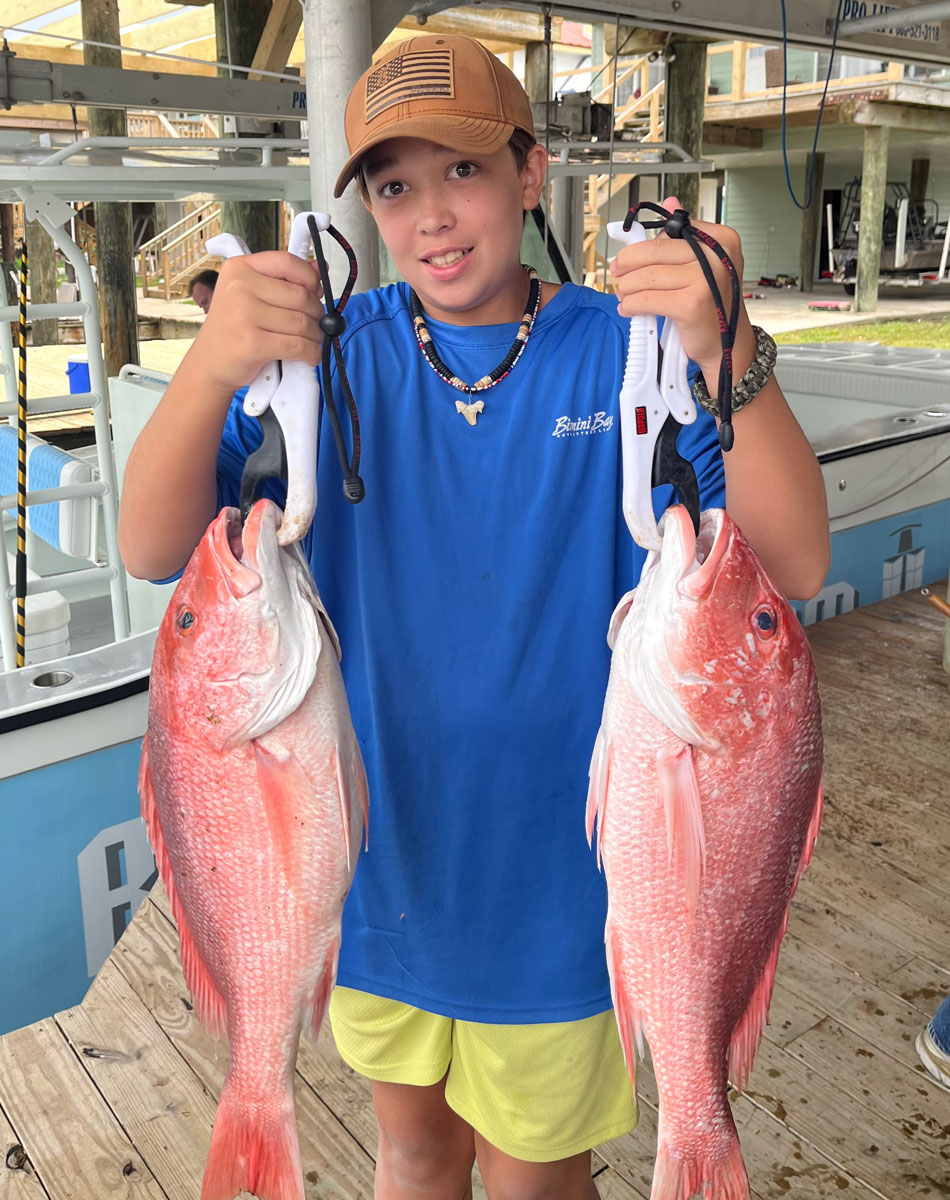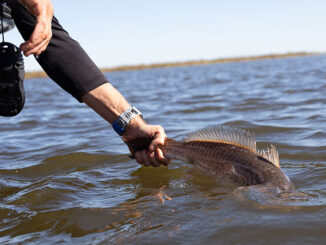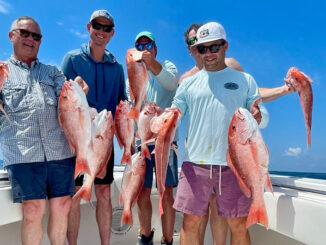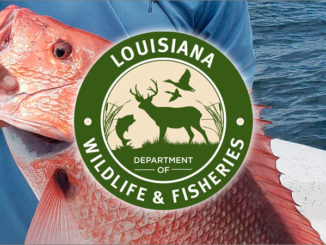
LWFC also discusses current proposed outdoor legislation
The 2023 red snapper season will begin May 26 with a three-fish bag limit, 16-inch minimum total length. The season will run seven days a week until Louisiana’s annual recreation allocation of 934,587 pounds is reached, or until Labor Day weekend.
Louisiana Wildlife & Fisheries Commissioners unanimously passed the declaration of emergency to modify the season at their regular meeting, April 6.
The LWFC also reviewed current legislation being discussed for the Louisiana outdoors. Sportsmen should study these proposals and let their elected officials know where they stand on these items.
The allocation is up from last year’s total of 809,315 pounds. Additionally, sportsmen could only fish three days a weekend with a three fish bag limit until Sept 18 last year. The previous season opened back up on Oct. 7, 2022 for eight days with a four-fish bag limit to utilize the remaining allocated 39,087 pounds.
According to Jason Adriance, LDWF marine fisheries biologist, red snapper numbers and sizes have been consistent through five years, leading to the increased season length.
“Weights have trended down over the last several years,” Adriance said. “This doesn’t concern me because ages have also been consistent. I don’t see any issues with the fisheries at this time.”
Average age of fish caught through five years have been six years old.
Rad Trascher, executive vice president of the CCA Louisiana, applauded commissioners for the action.
“I think that is fantastic news,” Trascher said. “They are listening to anglers, and it shows you what good science can get you. I think red snapper are in good shape, and the science is there to prove it.
Upcoming bills
Cole Garrett, LWFC general counsel, reviewed several bills to be brought up at the Louisiana Legislation session.
SB 99 – Red Snapper Possession Limit in State Water: If passed, this bill would add red snapper to speckled trout and redfish for species with a three-day possession limit on the water under certain conditions.
HB 576 – Menhaden Exclusion Zone and Quota: If passed, this bill would establish a quota of 266 million metric tons. It would also create a 1/2 mile exclusion zone coastwise, which extends to 1-mile from Aug. 1 through Oct. 31 each year. It would also establish a 1/2 mile exclusion zone in Breton and Chandeluer; 3-mile exclusion zone from Caminada to Barataria; 1-mile exclusion zone from Timbalier to Grand Terre.
HB 570 – Monetary Reward for Feral Hog Tail: If passed, this bill would allow LDWF to establish a $5 bounty on feral hog tails. LDWF could also adopt rules and regulations governing the program. Many of the commissioners opposed the bill because it would take from LDWF’s Conservation Fund to pay for the feral hog tails. Based on the five-year hog harvest, monetary rewards would cost LDWF approximately $5 million per season.
SB 119 – Repeals the Youth Hunting License Requirement: If passed, it would create an instrument to potentially amend other aspects of LDWF licensing framework. LDWF said it collects $100,000 from licenses and $750,000 in federal money from selling this privilege.
More bills being considered
Others include House Bill (HB) 4 – Criminal Trespass on Running Waters: Garrett said if the bill passes, criminal trespass would not apply to any person operating a vessel on Louisiana running waters. HB 59 – Operation of Personal Watercraft At Night; HB 207 – Unlawful Swimming: Minors; HB 297 – Prescription For Litter Violations: Senate Bill (SB) 90 – Commercial Use of Surface Water; HB 161 – Tax Exemptions for Commercial Fishermen and Processors; HB 503 – Removes Mandate on Issuance of LAZ Hull ID Numbers.
In other action, commissioners moved forward on a Notice Of Intent to amend Deer Management Assistance Program (DMAP) to liberalize bag limits and season length in areas of Chronic Wasting Disease (CWD). The area in question is a five-mile area in Tensas Parish where the disease has been detected.
Applicants will select from 1 to 4 levels of DMAP participation. Normally, Level 1 participation is limited to qualifying clubs of 1,000 acres or more. But the amendment states, “unless the property is 40 acres or more and located within five miles of a CWD detection.” In tier 1, hunters can exceed the daily and season bag limits, and the amendment expands the season for 15 days. The amendment also states, “Level 1 participation may require the submission of CWD samples per LDWF’s discretion for properties within five miles of a CWD detection.”
“We’re headed into a new arena of targeting animals in known CWD locations,” said Johnathan Bordelon, LDWF deer program manager. “We are talking about population management. We’re talking about keeping herd numbers well below carrying capacity. The fewer the numbers, the less likely to come in contact with another positive animal.”
Commissioners will hold a public hearing and possibly vote on the action next month.


